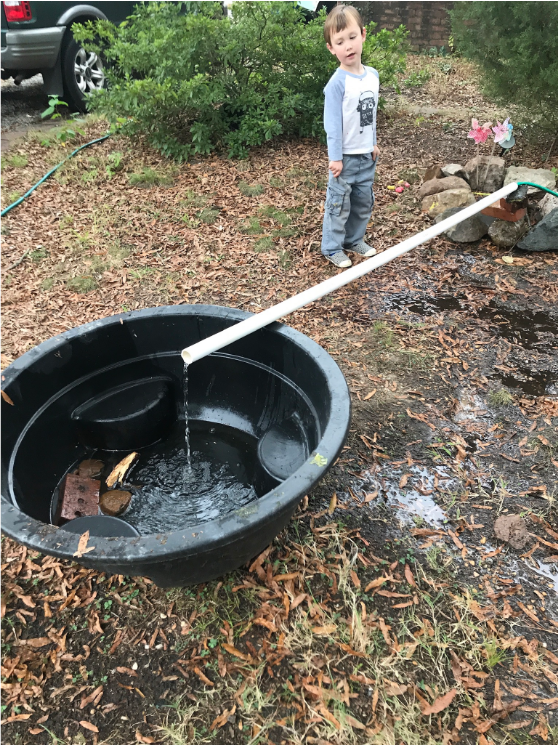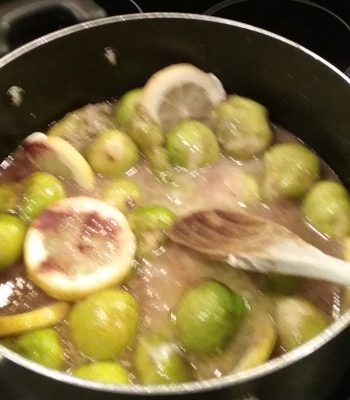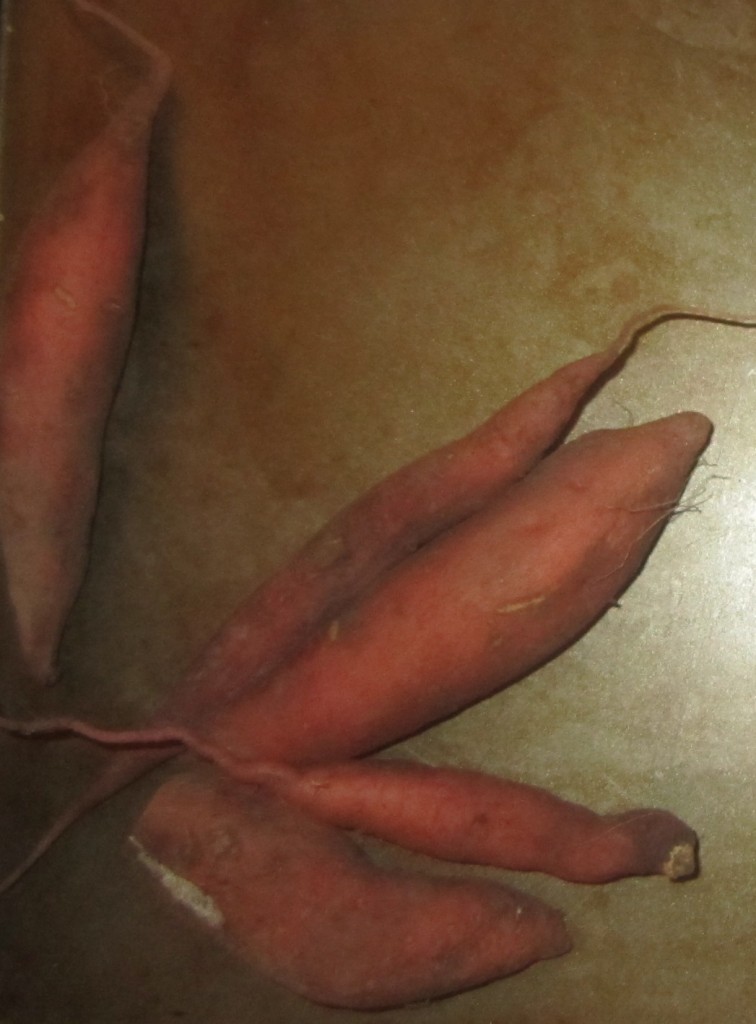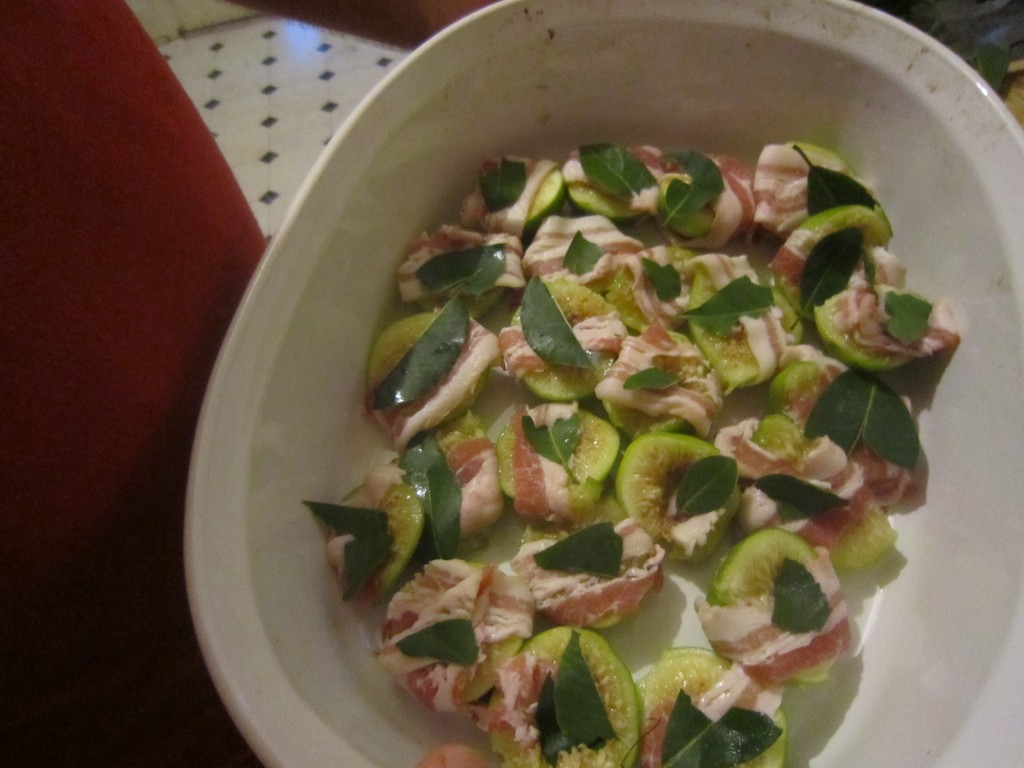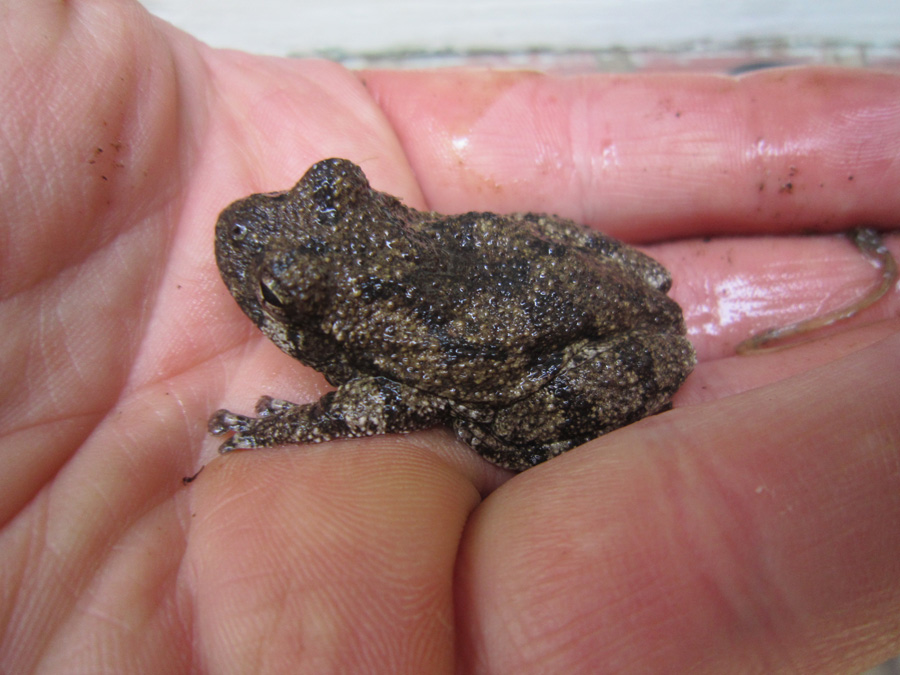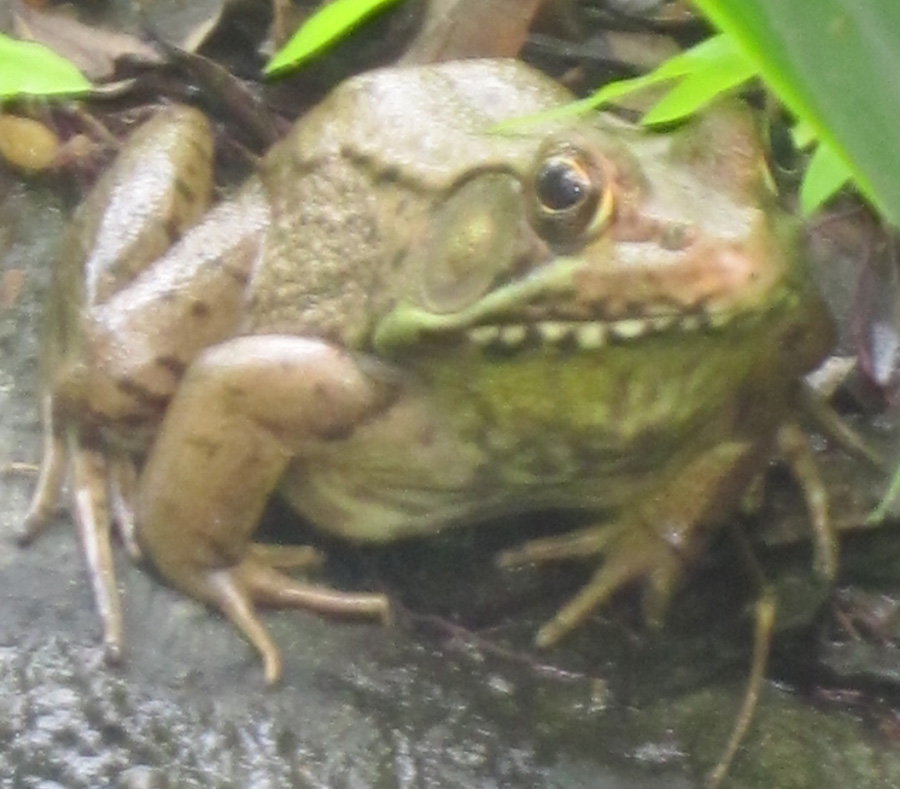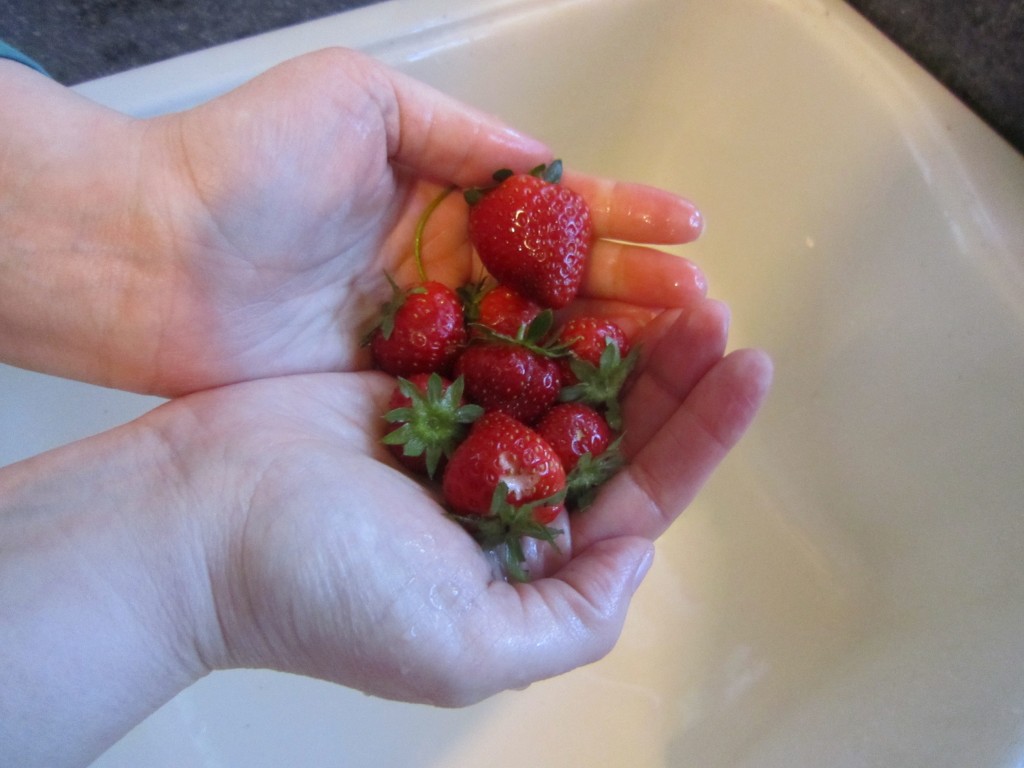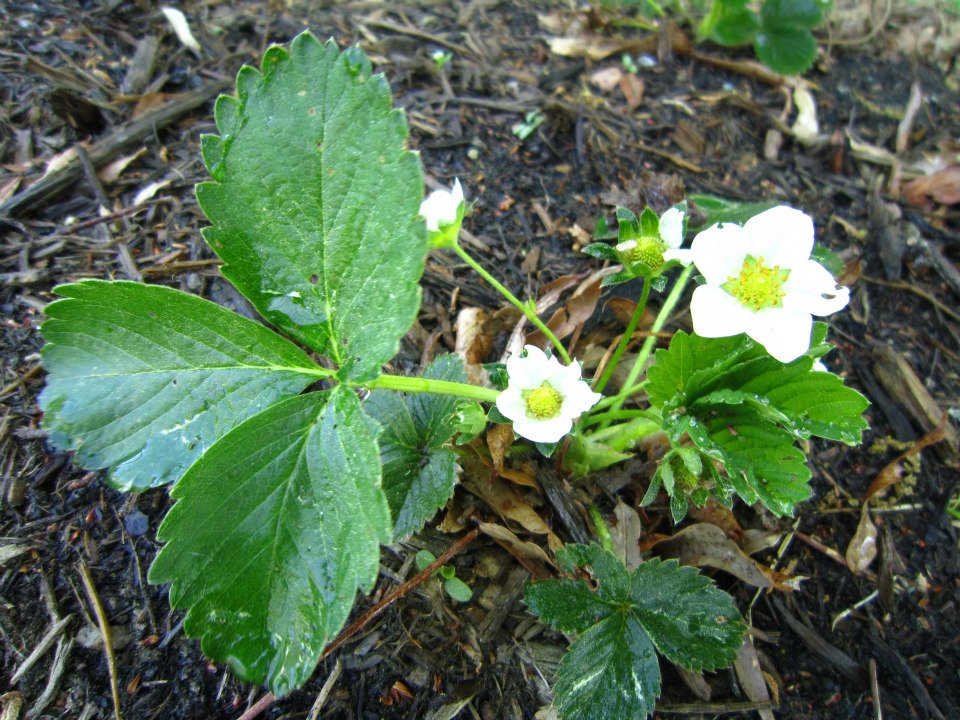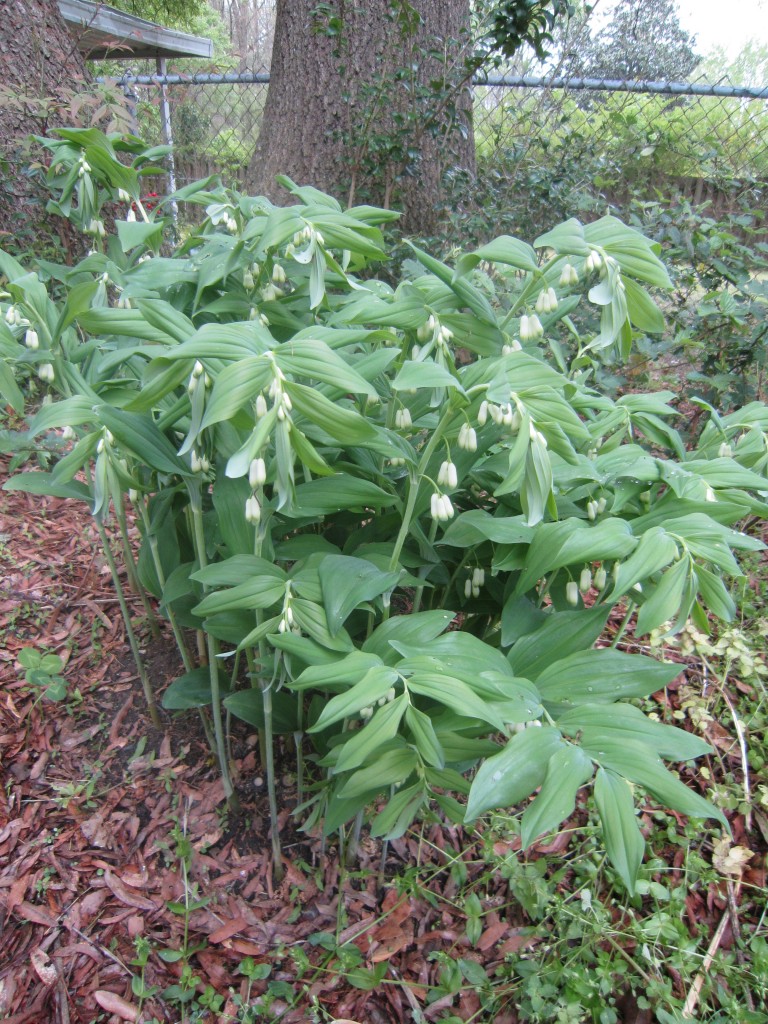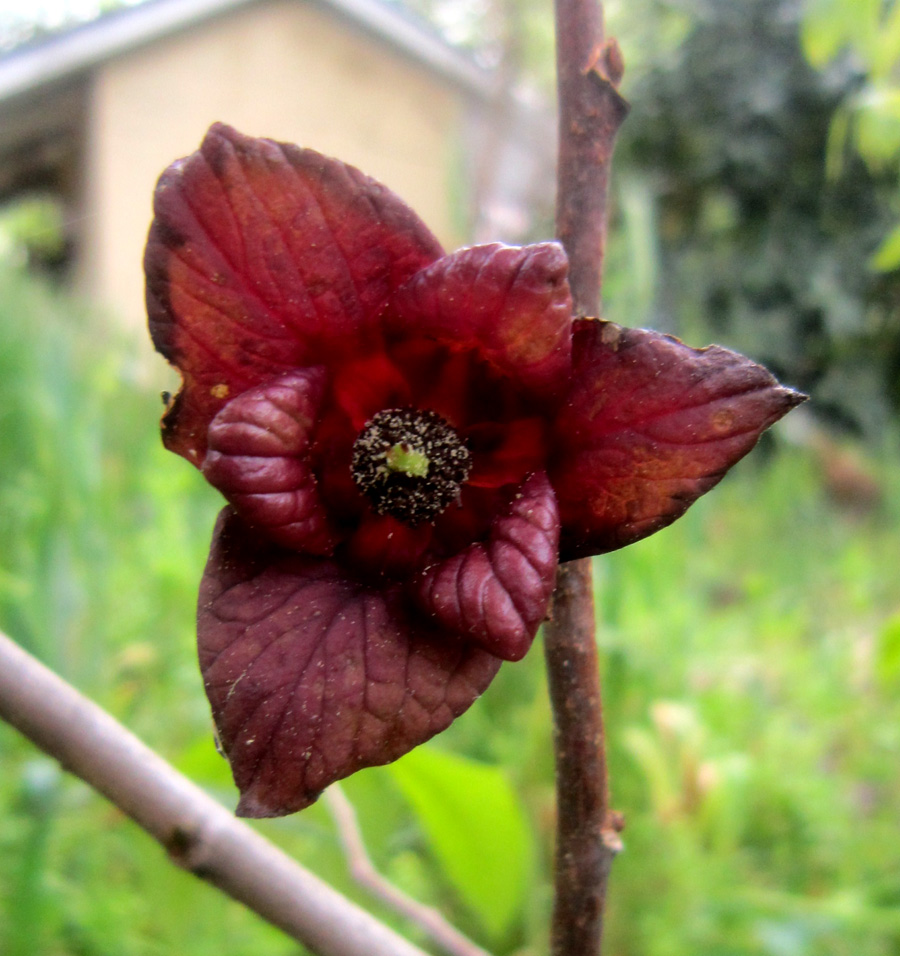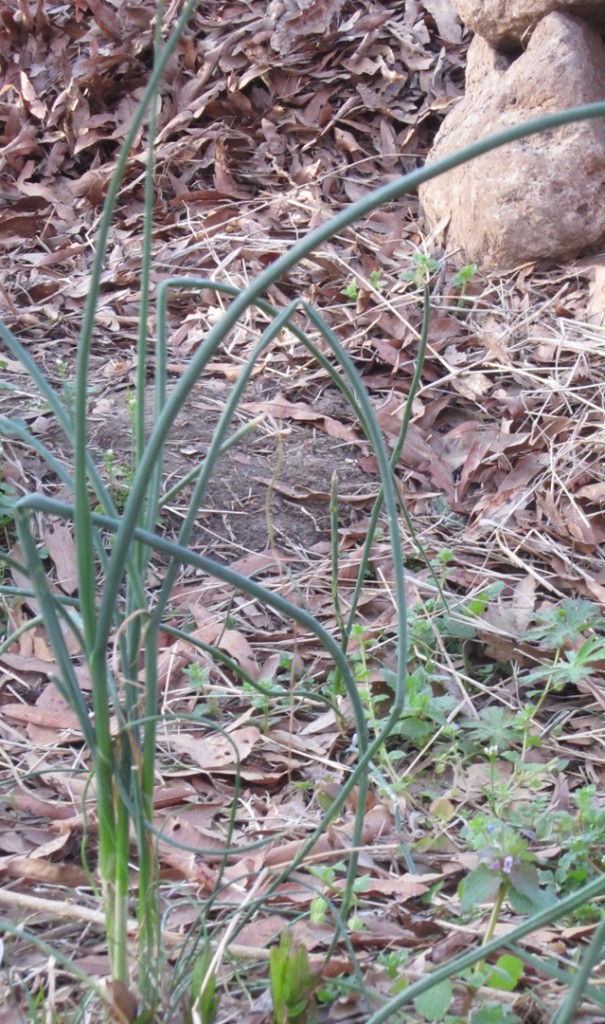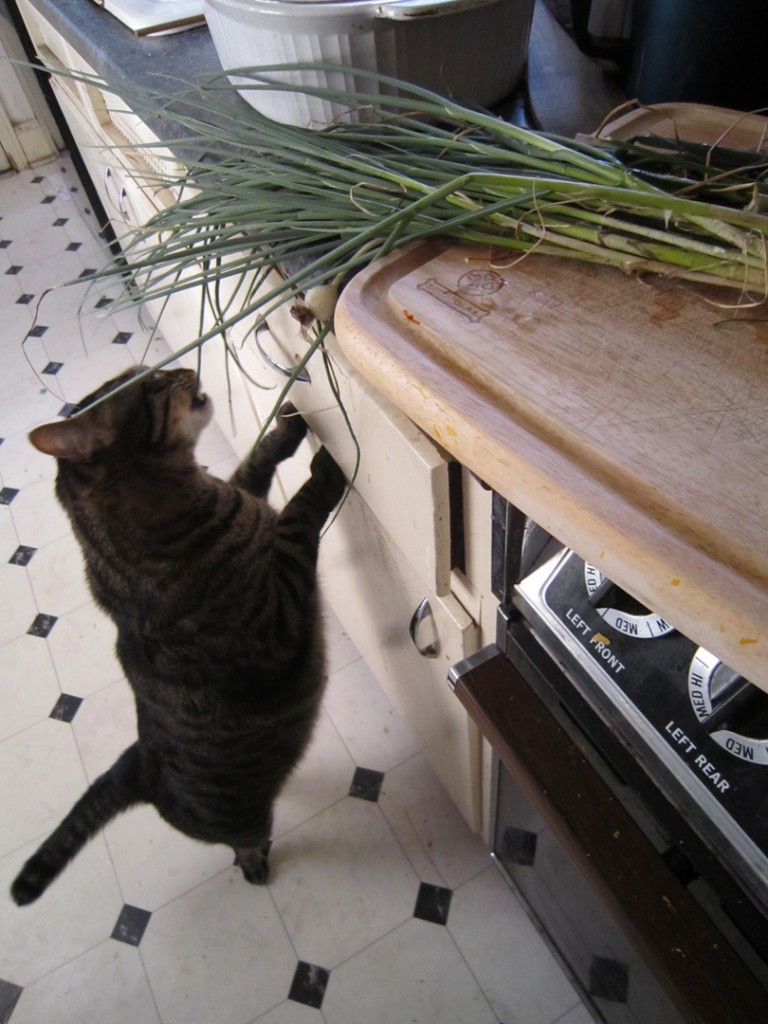Home » Garden Blog
Category Archives: Garden Blog
Blueberries are for the Birds
Being a permaculture enthusiast means playing the long game sometimes. It’s kind of like having an investment that eventually pays dividends.
I bought our house in 2007 knowing that I would be putting down roots in the City of Durham. What sold me on the property was our backyard—a fenced-in double lot, unusual for a house in the city. I remember kneeling down and scooping up some of the soil with my hands. The soil was black and earthy, unusual for our area where red clay is the norm. An old-timer from our neighborhood later told me that many years ago our backyard had been a sweet potato field.
A sign that things are now paying off is that after 12 years of trying, there were finally enough blueberries this year for our family and the birds. I had considered putting nets on our bushes to keep the birds away, but I didn’t relish the thought of picking birds out of nets. Plus it would just look kind of ugly.
I also thought about a cat we once had who used to kill birds. I did not want to be responsible for any more death and destruction. Eat freely, little birds, and sorry about all that carnage.
How wonderful that we can join the birds for this year’s bountiful harvest.
Where the Frogs Went
Lately we’ve seen cooler temperatures with periodic bursts of rain, filling up Farthing Pond and our big rain cubes. Last week I estimated that we had about 2,000 gallons of water at our disposal, so when Levi told me he wanted to “build some waterfalls” I was happy to oblige. I just let the water run from one of the 275-gallon cubes. Levi yanked the hose from me and started piling rocks and other debris on the sidewalk, joyfully watching the water trickle down the front of the yard.
After a while he started getting more creative, diverting the water flow through some old pvc pipe and letting it fill up an empty pond shell I had lying around.
It got interesting when he discovered that he could make his garden pinwheels turn if he directed the water flow towards them. It seemed like a perfect time to talk to him about the merits of turbines and hydropower. I told him he’d made an important discovery.
Feeling inspired, we turned our attention to Farthing Pond. What if we “made” a waterfall, or at least the appearance of one, trickling down from the pond? It would be a nice visual. And so we began pulling up large rocks and digging into the ground in front of the pond.
On this day the temperatures were much cooler. Levi asked me what the frogs of Farthing Pond did in the winter. I explained to him that frogs are cold-blooded, their body temperatures taking on the temperature of the environment around them. During the winter, they go into a state of hibernation, and some can be exposed to temperatures below freezing. I told him I thought they might be hanging out at the bottom of the pond, in the muck and the mire.
Minutes later, as I was pulling up a big rock to make room for our waterfall, I uncovered one of our beloved frogs. “He’s alive, and in perfect hibernation!” I yelled excitedly.
We just stared at him in amazement for a few minutes. “Looks like they love to burrow,” I told him. After that we decided not to unearth any more rocks. Let sleeping frogs lie.
Spider Lilies
I recently read the excellent book 1491: New Revelations of the Americas before Columbus by Charles Mann. An overriding theme of this book is that pre-Columbian inhabitants of the Americas shaped their environment to fit their needs, time and time again. Some of these environments were barren intially but the land inhabitants were able to cultivate them with remarkable success. He sites, for example the terra preta of the Amazon Basin. This anthropogenic soil was made by adding a mixture of charcoal, bone, broken pottery, compost and manure to the otherwise relatively infertile Amazonian soil. The soil’s charcoal has remained in the soil for thousands of years.
I was thinking about the book when I stepped out of the house today. The backyard has become wild and overgrown due to my inability to tend to it this summer. In addition to the long grass there are beautiful red spider lilies popping up all over.
These flowers usually bloom around the autumnal equinox and apparently are bulb-producing perennials which likely means someone planted them before I bought the house.
Looking back it was the backyard that sold me on the house. A large, skinny double lot in the city, I noticed the rich, dark, earthy soil in the back which seemed anomalous considering most of the soil in the Triangle is red clay.
I asked my geologist friend Brian if our soil was rich due to some geological feature. He told me that it wasn’t, that it was more likely the yard had been cultivated by previous owners. He paused for a second and said “but if that’s not the case then it could be a burial mound.” Startled for a minute, I remembered that one of our elderly neighbors told me that back in the day, our yard was a giant sweet potato field. I started thinking about the lot’s previous owners and how long it had been cultivated. Hundreds of years? Thousands of years?
We continue the tradition by composting what we can and giving much love to our beautiful back yard. We plan on spending the next couple of weeks taming the yard back in shape. But we won’t mow over any of the beautiful spider lilies.
The Fledglings
Our 3 bluebird babies. born on Easter Sunday, left the nest on day 17. It was a remarkable experience to see these little things on the day they were born–tiny and hairless, like little pink shrimp.
We were all amazed at how quickly they developed. By day 4, we could make out their eyes–still fused shut. When I peeked in, they opened their little mouths, thinking it was feeding time. They were still covered with soft, gray down.
After a week or so we could make out the feathers. The last picture I took of them was day 16.
The bluebird parents did an excellent job guarding the perimeter, perched on our fig tree. We became familiar with their sounds and watched as they flew in and out, delivering grub worms to their hungry babies.
Our massive tabby Franklin would occasionally look up at the house, licking his lips and making that funny, chattering sound known as the kill-bite reflex. Too big and clumsy to scale the pole for a snack, he kept other potential predators at bay. Guardian of the yard, he resumed his usual practice of hunting for frogs in the pond. Fortunately, they too have proved elusive.
I told Levi we’d clean out the birdhouse and let another family start over again. He seemed pleased.
To Plant a Rainbow
One of Levi’s favorite books is Planting a Rainbow by Lois Ehlert. In this beautifully-illustrated board book, a mother and daughter plant a rainbow of flowers in their garden. One night after I finished reading the book to him, Levi told me that he wanted to plant a rainbow garden too. That week he’d been learning about the colors of the spectrum in school.
 “Alright,” I said. I told him we could start in the front of the yard since we had a nice row of daffodils there. “We already have a lot of yellow,” I told him. That seemed pretty reasonable to him. “But we need to get some flowers that mama likes,” he said. I told him that his mother’s favorite flowers were tulips, so we could start with those.
“Alright,” I said. I told him we could start in the front of the yard since we had a nice row of daffodils there. “We already have a lot of yellow,” I told him. That seemed pretty reasonable to him. “But we need to get some flowers that mama likes,” he said. I told him that his mother’s favorite flowers were tulips, so we could start with those.
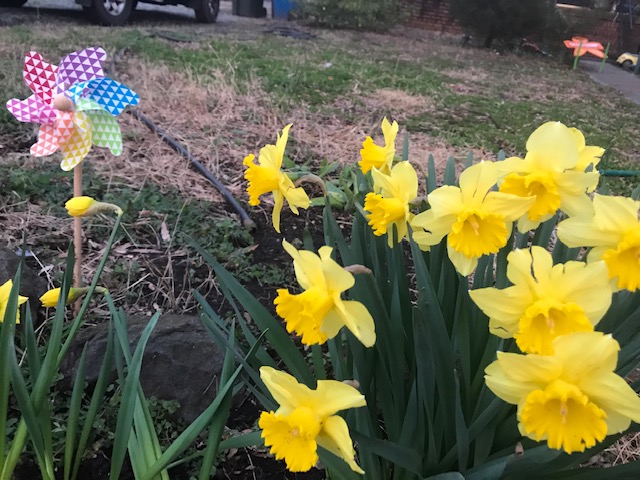 Later that week we went to the garden store. Levi picked out some nice red tulips for Shawnna. We planted them in a row in front of the daffodils.
Later that week we went to the garden store. Levi picked out some nice red tulips for Shawnna. We planted them in a row in front of the daffodils.
The next week we added to the spectrum–orange marigolds and lampara, purple violets, and a beautiful cascading blue ground cover. A kind neighbor gave us some tiger lillies.
 I let Levi decide where he wanted to place the plants, and together we dug holes for them. Occasionally we’d dig up a grub worm which we’d leave for the bluebirds next to their house.
I let Levi decide where he wanted to place the plants, and together we dug holes for them. Occasionally we’d dig up a grub worm which we’d leave for the bluebirds next to their house.
After we finished planting, Levi wanted to make sure that the plants got enough water.
He made several trips to the backyard pond, dunking his watering can into the water and then racing back to the front yard to take care of the flowers. It was exhausting to watch.
By the end of the day, we were tired but happy. I am so grateful that this child loves being outside with me.
The Bluebirds and the Blueberry Bush
This weekend Levi and I worked and played in the yard together. It’s an exciting time now, as he’s able and interested in helping out on the “Family Farm” on Farthing Street.
A few weeks ago we put together a bluebird house and stand. I didn’t let him use the drill of course, but his eyes, much better than mine, were able to find the drill bits for me. We staked the house next to the pond and I told Levi I bet they will love it here at Farthing Pond. We just have to be patient and wait.
Saturday the bluebirds arrived. We watched as one sat on the house, puffed up mightily, defending his territory from cardinals and thrushes. This morning, Levi jumped out of bed, opened the curtain and was delighted to see one of the bluebirds sitting on the house.
Outside, daffodils were everywhere like little coming attractions for spring. Together we planted tulips, which he’d picked out at the garden store for Shawnna (he knows they are her favorite flower.)
As we planted the tulips in a row in front of the daffodils, we’d dig up the occasional grub worm. I explained to Levi how bluebirds loved them and we left some as a present for our new friends.
Levi called the ground squishy in some places and he was right. We’ve gotten so much rain this winter. Over the last couple of months, when it hasn’t been raining, we’ve been expanding our bioretention area in the back. The pitcher plant bog is saturated with water and has looked like a small creek at times during the recent rains.
The plants are loving all the extra water that we are catching coming down our sloped yard. For example, we have 3 paw paw trees that are budding now. The trees sit next to a fake stream bed that I carved out at the top of the yard in the back. Paw paws are river trees. We might actually have some to eat this year.
Another example: in front of the bog we have a blueberry bush that is almost eight feet tall. It’s grown like a weed this winter. It’s also expanding sideways and is taken over everything with little runners sticking out all over the place
There should be enough berries for both birds and humans this year.
Fig Eaters on Farthing Street
Trying to grow our own food has been a challenge, but in recent years we’ve had decent luck with our fruit-bearing plants like strawberries and blueberries, and our enormous fig tree. Every August we eagerly anticipate the fig harvest, and 2017 did not disappoint!
This year little Levi had fun picking figs for the first time. Earlier in the month I had explained to him that we can only harvest the figs when they feel “mushy.” After that, he’d run up to the tree and squeeze each green, unripe fig, saying “not ripe” to me.
When the first figs started turning, I pulled one off and broke it in half, showing him the sweet mushy inside, then took a big bite. He did the same with another fig but decided he didn’t really like the taste. That didn’t stop him from picking figs with Oma, though.

We are now enjoying Oma’s fig preserves, and have been eating them with toast, biscuits, and straight out of the jar.
The Healing Salve
A few years ago I wrote about my obsession with the miracle plant, Comfrey.
I wrote how the plant has been used for a variety of purposes over the years, from healing fractures, helping with skin irritations, insect bites and inflammation associated with rheumatoid arthritis. It’s a nitrogen fixer too, which means it’s a great fertilizer. I love it’s pretty purple flowers, too, and so do the bees. So I planted a whole bunch of it, and it turns out that it is a very vigorous perennial indeed.
Before I work in the yard, I usually pick some comfrey leaves, tear them apart and rub my arms with them. The leaves produce a semi-sticky substance, known as allantoin, which keeps the poison ivy at bay.
When my wonderful mother-in-law, Rosemary, recently paid a visit, I told her how I thought it would be a great idea to make a comfrey healing salve. Before I knew it, she had taken my idea and run with it. She started by drying a mixture of salve herbs, including the comfrey leaves.
Next, she infused the herbs with oils. I gave her a giant slab of beeswax that had been taking up space with my art supplies. I had used beeswax for an encaustic painting project a few years back. She took the beeswax, shredded it in the kitchen and used it to finish making the salve.
Then, after letting the batch cool, she put them in little tins. For my part, I’m trying to design a logo for her product!
Rosemary, who is a member of the Eastern Band of the Cherokee Nation, plans on calling her salve “Cherokee Rose’s Healing Salve.” I hope she gives Burt’s Bees a run for their money.
Currently she’s looking for one more ingredient to add to the mixture that will give it a more pleasant smell, as the tea tree oil in the mixture gives it a very slight odor, not unlike insect repellent.
At our house, Rose is known as Oma, and we always look forward to her visits. Here she is in 2015, right after Levi was born.
Nice work, Oma!
The Sweet Potato Harvest
Last weekend we dug up a bunch of sweet potatoes and transferred them to the cellar, where they’ll be curing for a few weeks under a fan. If they promise to be sweet enough by Thanksgiving, we just might let them out of the basement for the celebration.
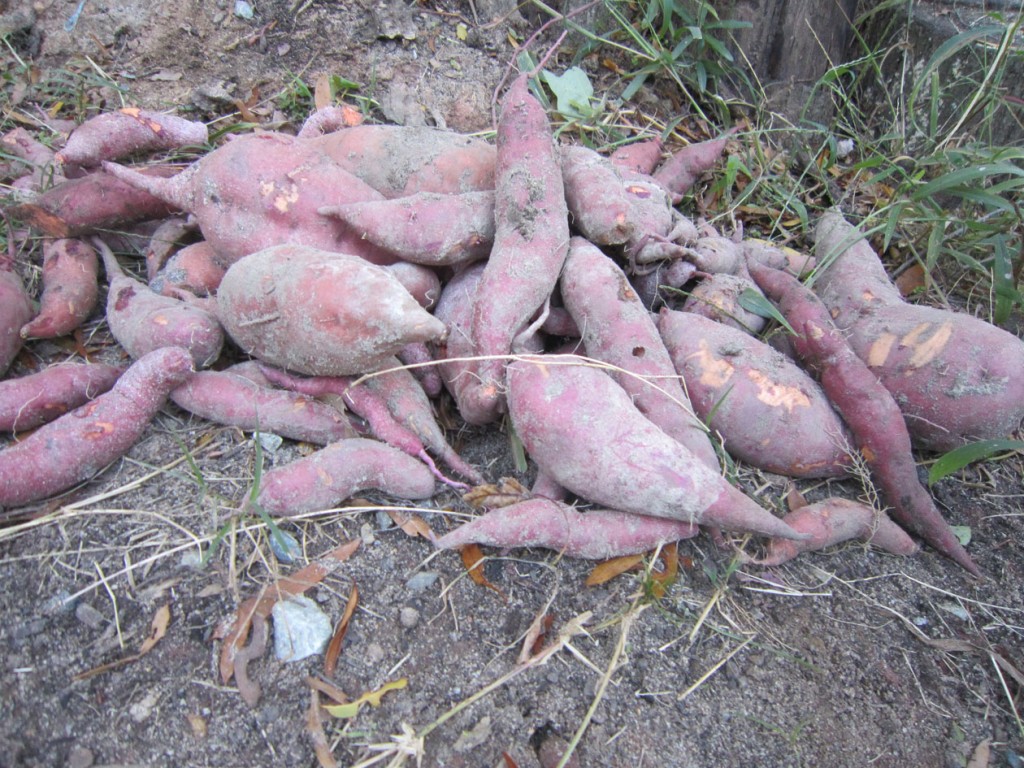
Earlier that afternoon I’d been staring at the pretty greenery of the sweet potato terraces I’d constructed back in the summer. Armed with a shovel, I hesitated for a minute, worrying that I might accidentally cut some of the little beauties open at first strike of the ground. I thought a little blessing might help prevent casualties. May this be a bountiful harvest, I whispered before taking a plunge into the ground. It didn’t work; as soon as my shovel hit the ground, I split a beautiful big sweet potato right in two.
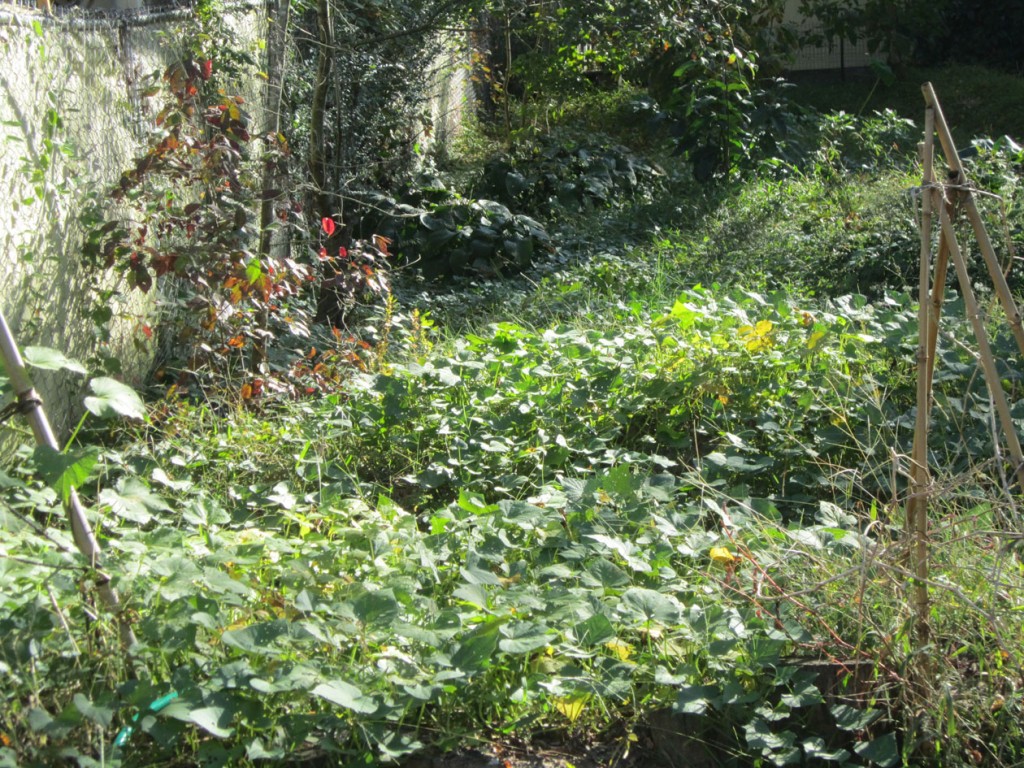
Suddenly it occurred to me that using a hoe might be a much saner approach to harvesting sweet potatoes. It was. From that point on I had fun pulling them out of the ground in one piece.

Next year we hope to get an even bigger yield by using drip irrigation from our rain barrels. This year I found the biggest potatoes in the sections of the terraces where the soil stayed moist. Those potatoes that had the misfortune of being in the under-watered areas suffered. When dry, the sandy loam tends to clump up into little blobs, leaving a little shriveled potato in the mix.
We look forward to dining on sweet potatoes this holiday season.
The Gash
I was in the kitchen prepping for a spaghetti dinner when I spied a beautiful string of cherry tomatoes beckoning me from the backyard. I knew they would be a tasty addition to the evening’s meal, and I was so proud of myself for being able to grow my own food. Practically running out of the house towards the tomato patch, my joy turned to horror when I picked up one of the tiny beauties and rolled it over. It was grimacing at me with a huge, angry, gash-of-a-smile. Soon I realized that all the tomatoes in the patch, big or small, were afflicted with cuts of varying pattens.
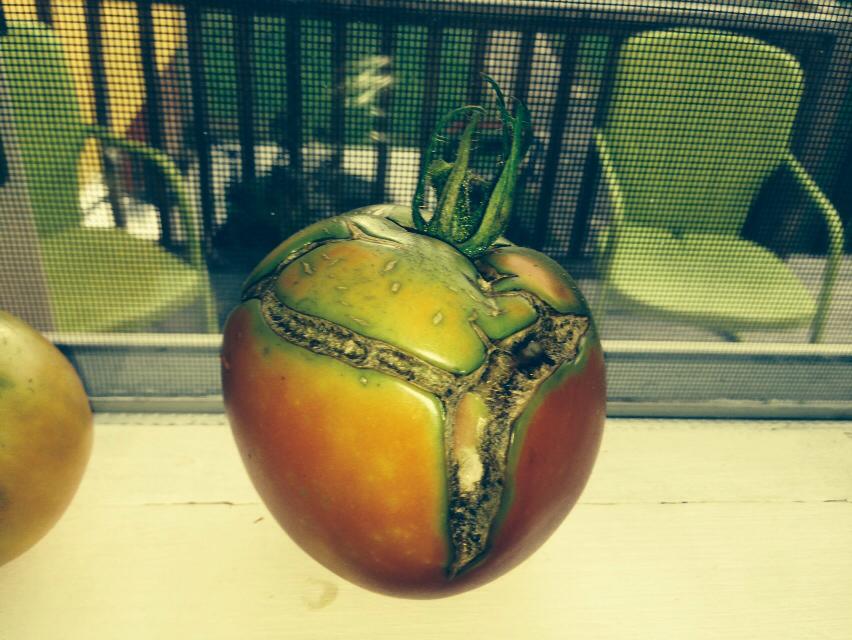
This has been the story of the summer. (I wish I had a good tomato for everytime one of my Triangle friends complained about their tomato crop this year.) 2014 has been an interesting year weather-wise here in Durham, with some hot dry spells followed by monster downpours. Call it Bull City’s Monsoon Season. From what I understand, it is this disproportionate watering cycle that causes the tomatoes to expand to accommodate the influx of water. When the skin can’t grow enough to hold all the water, it cracks.
Bottom line, tomatoes need consistent watering. This is why they can be so hard to grow, and why some people grow them hydroponically. It has me seriously considering growing them bins or big pots in 2015, using overflow from one of our rain barrels to keep them filled to capacity. If we decide to grow them in the ground again, we’ll probably use slow-drip irrigation from one of our larger rain containers. Increasing the amount of mulch around the plants will also help them retain moisture. Of course, one could always water their tomato plants every day, but what fun is it if you can’t let Nature do part of the work for you?
Lessons from the Incas
This week the Nature Boy is thankful for the ancient Peruvians. Everything
that’s been going on in the backyard lately, they did it first, and better, too. More specifically, I’m referring to my attempts at:
1. Growing (massive amounts of) sweet potatoes
2. Storing, capturing, and distributing water for growing food
This moment of recognition-gratitude came as I gazed out at the terraces I’d constructed on the left side of our sloped backyard. I looked at the sweet potato shoots sprouting out of them, and thought of those tiny tubers growing under the ground. I licked my lips in anticipation of the fall harvest. (My obsession with the sweet potatoes is well-documented.)
 The sweet potato was originally cultivated in South America, where remains of Peruvian sweet potatoes have been found going back almost 10,000 years. It has quite a history, but I’m just thankful that it made its way to the North American continent.
The sweet potato was originally cultivated in South America, where remains of Peruvian sweet potatoes have been found going back almost 10,000 years. It has quite a history, but I’m just thankful that it made its way to the North American continent.
Looking at the terraces, I started thinking about the elaborate stone-faced terraces that the Incas constructed on the sides of mountains. They used them for the same reasons I’m using them: to minimize erosion, to capture water for growing food, and to create usable gardening space in a sloped environment.
This week’s trip to the library took me to South America, where I’ve been reading about the history of ancient Andean irrigation systems like the Puquios, a system of aqueducts near Nazca, Peru. It’s been fascinating to read about how people tapped subterranean aquifers to create wells and develop drip irrigation systems.
As for the sweet potato, we’ll probably never know exactly how it got from South America to North Carolina. DeSoto writes about finding them in Louisiana in the 1540s. Several of our regional Indian tribes grew them, including the Creek, Cherokee, Saura, and Tuscarora. Today North Carolina leads the nation in sweet potato production.
Paw, paw, where’s my maw?
This weekend I got to play tree doctor as I performed an IVF procedure in our paw paw patch. Fortunately, the procedure was inexpensive, requiring only a plastic bag and a paint brush, and a knowledge of paw paw anatomy. Paw paws can be tricky to fertilize because they are too stinky for bees, giving off a carrion smell that attracts flies. The flies are supposed to pollinate them, but haven’t been doing a great job. Since our trees haven’t borne any fruit yet, I decided to step in.

Paw paws have an interesting developmental life cycle. When the flowers bloom in the spring, they start out as females. Note the stigma in the middle, which is part of the female anatomy.

After a few weeks, the female flowers morph into males,
becoming “hairy” with a coat of pollen.
The procedure was pretty straightforward: I would take some of the flaky pollen from the male flower of one tree and transplant it to the stigma of the female flower of another tree. Fortunately, I had a few male and female flowers on each tree.
Pretty soon I identified my first male donor. He was ready to go and didn’t need any priming.

My assistant handed me a plastic bag, and I began flaking the pollen off the male flower with a paintbrush, letting the pollen flakes fall into the plastic bag.

Then I went to a neighboring tree to find a female flower. “That’s a very healthy stamen you have, Ms. Paw Paw,” I said reassuringly.

With my artist’s brush I dabbed on the pollen flakes and gently applied them to the stigma of the female plant. We’ll see if anything bears fruit. It’s just a matter of time now…
The Harvest
This week we brought our fingerling sweet potatoes up from the basement where they’d been curing after this fall’s harvest. Unfortunately our basement wasn’t as cool as we’d thought, so they were a little soft. Next year we’ll need to keep them under the fan.
This hasn’t make our little babies any less tasty, though—they are delicious–but it does mean we need to eat them up in a short amount of time. Of course, I’ve been binging on them from the moment I brought them up from the basement. It’s been a few days now, and my skin now has a nice, orange glow.
A couple of nights ago while peeling a bunch of them in front of the television, I discovered that our bobcat, Franklin, loves sweet potatoes almost as much as his daddy. He’s become quite a discerning herbivore with a sophisticated palate.
He loves the stringy ends of the fingerlings, usually slinging them around before crunching down on the delicious orange center. I gave him a few of the smaller ones. He seems to like the peeled skin too, which makes me wonder if he’s looking for nutrients. I did a little wikipedia research to find out about cats and vegetables. Apparently when cats kill a bird they eat the vegetable matter out of its stomach. Kind of gross, huh? Gives me an idea for a cat toy with a sweet potato center. 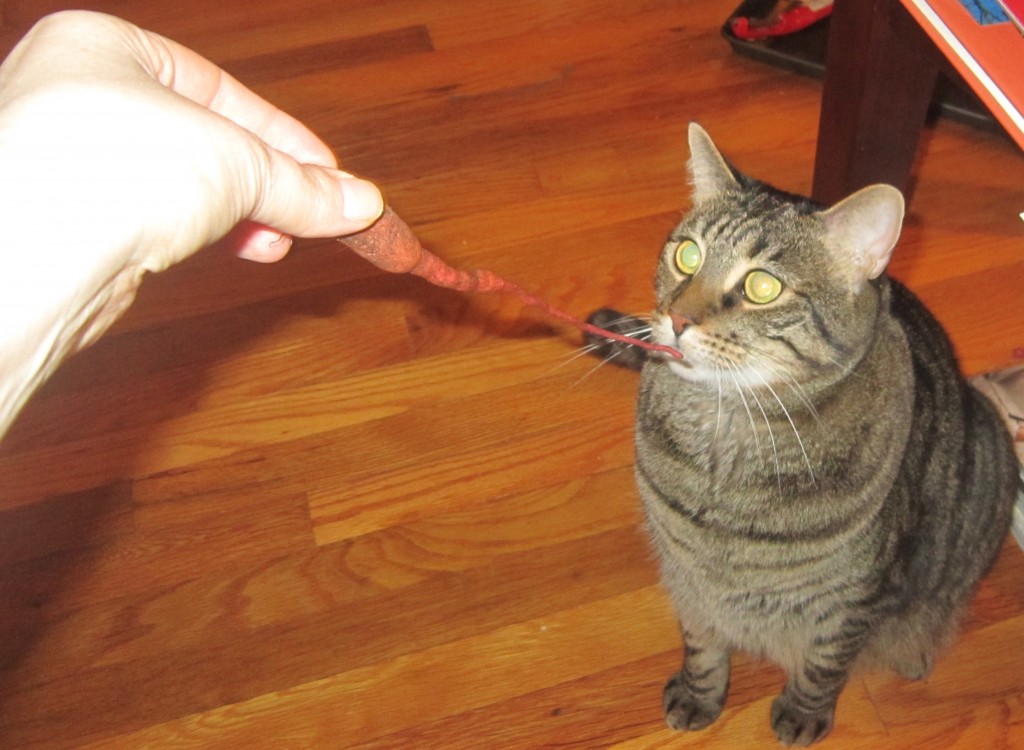
The Rogue Squash
This year we had some butternut squash (Cucurbita moschata) grow up out of nowhere in our backyard. I’m sure a kindly bird dropped the seeds off for us (unless there is a Squash Fairy.)
 I cut off a piece and tasted it; it was the most delicious piece of raw squash I’ve ever had. Later that afternoon I discovered a little secret, though: squash tastes even better when cooked with cream and sherry. That evening we dined on squash soup!
I cut off a piece and tasted it; it was the most delicious piece of raw squash I’ve ever had. Later that afternoon I discovered a little secret, though: squash tastes even better when cooked with cream and sherry. That evening we dined on squash soup!
To prepare the soup, I had to cut the squash in half. This turned out to be an excruciating task. For a minute I thought about getting the electric saw out of the basement, but that thing scares me. Thankfully, Shawnna suggested heating the squash in the oven for 10 minutes or so, which made it easier to cut through.
Once I’d cut the squash in half, I placed the pieces in a baking dish with a little bit of water and cooked at 300 degrees for about 30 minutes. After letting it cool for a couple of minutes, I took out the remaining seeds and peeled the skin away. Throwing in some ginger, salt and pepper, I chopped up the pieces and mixed them in the food processor. Meanwhile, I sauteed some onions with butter, nutmeg and allspice. Everything then got thrown into the dutch oven with vegetable stock, cream and sherry.
 I turned it up to a boil, and then let it simmer for a while. It was probably some of the best soup I’ve ever made.
I turned it up to a boil, and then let it simmer for a while. It was probably some of the best soup I’ve ever made.
Squash is a New World Native and was growing in Mesoamerica before the arrival of any humans. It was part of the diet for many indigenous people from South American to Canada, who started cultivating it between 8 and 10,000 years ago. I wonder if they had any soup recipes?
Figgin Out
It’s fig season on Farthing Street.
 This annual harvest is accompanied by a sense of urgency because there is always a very short window of time, sometimes just a day or two, when a fig is truly ripe and ready for consumption. Left on the tree too long, the fig will ferment and become food for wasps and bees.
This annual harvest is accompanied by a sense of urgency because there is always a very short window of time, sometimes just a day or two, when a fig is truly ripe and ready for consumption. Left on the tree too long, the fig will ferment and become food for wasps and bees.
For weeks I had waited, somewhat impatiently, for that special moment. Shawnna would come home from work and find me outside, my face buried in the branches of the tree, deftly squeezing the bulbous fruit for signs of “mushiness.” The mushiness means that the fig is sweet and juicy.
 When that glorious day arrived, we had so many figs that I filled up a mixing bowl from the kitchen. I decided to try a recipe from our mediterranean cookbook, which involves wrapping the figs with pancetta and bay leaves, and then cooking them in the oven.
When that glorious day arrived, we had so many figs that I filled up a mixing bowl from the kitchen. I decided to try a recipe from our mediterranean cookbook, which involves wrapping the figs with pancetta and bay leaves, and then cooking them in the oven.
 For you vegetarians or those of you on a kosher diet, pancetta is pork belly meat that is salt-cured and contains peppercorns. It is heavenly. I was caught off guard when I took it out of the package. It smelled so good that for a minute I lost the ability to concentrate. Fortunately I had already halved the figs, and the rest was easy. I gently wrapped my figs in the strips of pancetta, like little pigs-in-blankets. The bay leaves were the finishing touch. I placed them in a baking dish and set in the oven at 300 degrees for 20 minutes. Shawnna and I couldn’t get enough of them. Figs in the raw are tasty enough, but this was a culinary delight.
For you vegetarians or those of you on a kosher diet, pancetta is pork belly meat that is salt-cured and contains peppercorns. It is heavenly. I was caught off guard when I took it out of the package. It smelled so good that for a minute I lost the ability to concentrate. Fortunately I had already halved the figs, and the rest was easy. I gently wrapped my figs in the strips of pancetta, like little pigs-in-blankets. The bay leaves were the finishing touch. I placed them in a baking dish and set in the oven at 300 degrees for 20 minutes. Shawnna and I couldn’t get enough of them. Figs in the raw are tasty enough, but this was a culinary delight.
Fig trees, which thrive in mediterranean climates, are drought-tolerant plants. That means you don’t have to water them much, provided your yard gets a lot of sun. If you live in the Triangle, consider getting one. The leaves are tough and leathery (you may recall that Adam and Eve, in their postlapsarian shame, made clothes out of them.) I’ve noticed that the leaves seem to be impervious to the pests that like to chew up our fruit trees.
Plant a fig tree this fall! You won’t regret it.
A frog named Jabba the Hutt
We’ve got a new friend in the backyard. An enormous bullfrog, who I’ve named Jabba the Hutt, has established a presence at Farthing Pond. We’ve become quite close; I can sit down right beside him and he won’t even budge. He does let me know that I’m in his territory, though. He even answered my greeting of Die Wanna Wannga. Unfortunately, that’s about all of the Huttese language I know. (It just occurred to me in writing that phrase that Huttese might have some relation to German, although die in Huttese is pronounced day as in neighbor or way, and does not appear to be used as a modifier.)

I named him Jabba because of his resemblance to the fictional character, particularly in his sheer enormity, his brownish-yellow hue, and bumps around his mouth. Later, I had some regrets about the name I gave him; after all, the character from Return of the Jedi exemplifies morbid obesity and personifies at least four of the seven deadly sins, including greed, lust, gluttony and avarice.
Me: Do you think it’s disrespectful that I named our friend “Jabba the Hutt”?
Shawnna: I think he would be honored to be named after such an epic story.
My wife, master of the re-frame. Strong with the Force she is.
2013 will go down in history as “The Year the Frogs Came.” We finished Farthing Pond in 2010, and it only took a couple of months for the word to spread amongst the amphibians. We’d hear tree frogs and the occasional bullfrog after heavy rains. This year is different. They’ve totally established a beachhead. We hear them every night now, lots of them, regardless of the weather conditions. I’ve asked several of my neighbors if the noise bothers them, but they don’t seem to mind, maybe because it drowns out the sounds of I-85. When I close my eyes at bedtime I can imagine I am in a more bucolic locale.
The frogs love hanging out in the various plant containers I have submerged in the pond, such as this scouring rush.
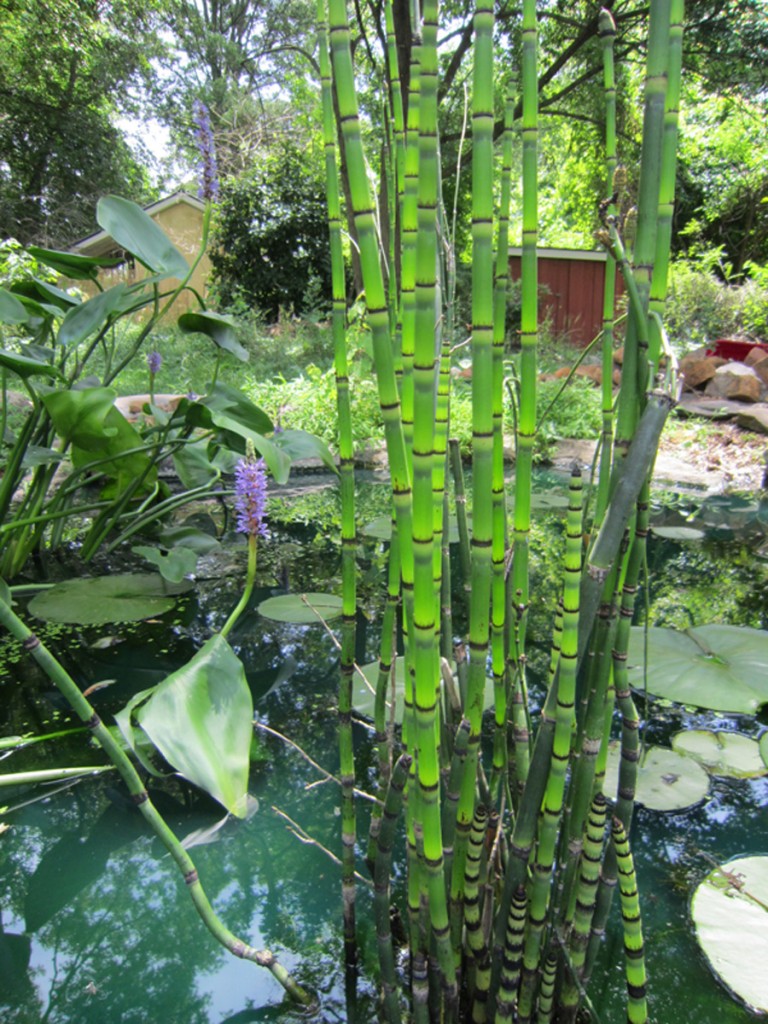
The containers are submerged in the pond and held up by pvc pipe. The frogs enjoy them because there is enough room for them to sit upright in the container with their eyes just above the water. I never realized that in placing these plants I had helped create an ideal habitat for our amphibian friends.
I found this little one while I was re-potting one of the containers.
Feeling inspired, I decided to construct a shelter in one of the containers. I named it “Jabba’s Palace.”
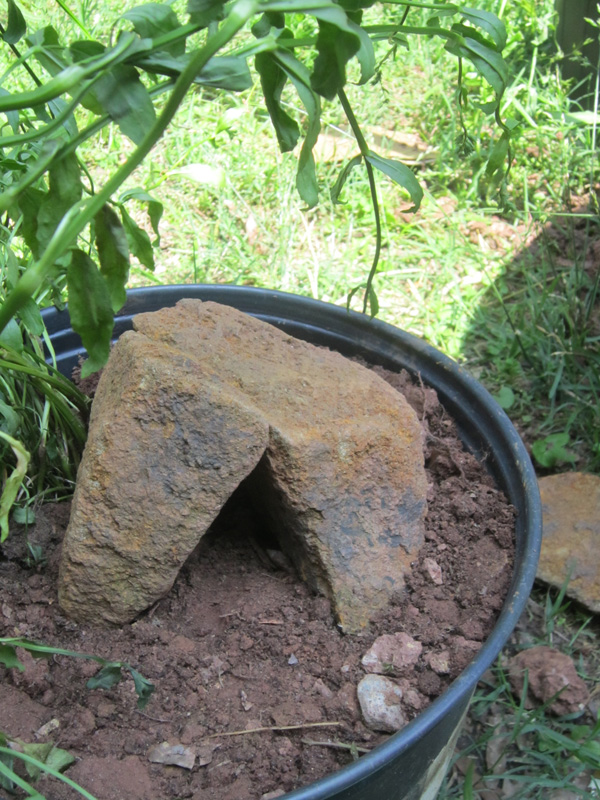 Hopefully this will be a nice place for Mr. Hutt or members of his clan to chill on hot summer days. Who knows, maybe it will even provide some protection from the herons, raccoons, crows and kitties who consider Farthing Pond a fun, locally-owned restaurant and watering hole. They are true Durham foodies, believe me. I think that the birds have realized that it’s a nice place to fuel up on their flights from Northgate Park to the Ellerbe Creek Beaver Pond.
Hopefully this will be a nice place for Mr. Hutt or members of his clan to chill on hot summer days. Who knows, maybe it will even provide some protection from the herons, raccoons, crows and kitties who consider Farthing Pond a fun, locally-owned restaurant and watering hole. They are true Durham foodies, believe me. I think that the birds have realized that it’s a nice place to fuel up on their flights from Northgate Park to the Ellerbe Creek Beaver Pond.
For various reasons, amphibian populations have been on the decline for the last few decades, including the extinction of some species. It makes me happy to know that we are encouraging amphibian conservation here in Durham. Even if you don’t have a pond at your house, constructing a toad house does not take a lot of effort. Remember that frogs and toads like to eat mosquitoes, and are a natural form of pest control.
For further reading, check out the Amphibian Specialist Group’s website.
Tie a sticky ribbon ’round the old oak tree
And they shall cover the face of the earth, that one cannot be able to see the earth: and they shall eat the residue of that which is escaped, which remaineth unto you from the hail, and shall eat every tree which groweth for you out of the field. (Exodus 10:5)
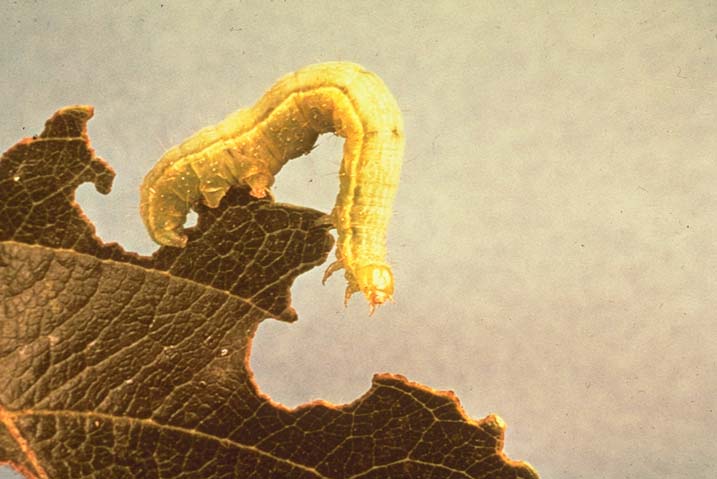
As many of you know, those little green cankerworms
invaded Cackalacky again this spring.
They’ve disappeared now that their larval stage is over, but they left a wake of destruction. The leaves on our fruit trees and blueberry bushes look like Swiss cheese. While not fatal for these plants, the damage certainly contributes to our under-performing fruit harvest.
Last month they were everywhere, in places like our front yard, chewing up the leaves on our enormous oak tree (apparently oak is their favorite.) Often they would bungee jump off the tree, tied to a little silk thread, landing on my face, arms, or slithering down the back of my shirt. Once Shawnna picked four of them off me before bedtime. Whenever I walked outside, I’d hear a crackling noise, reminding me of the sound of sleet or frozen rain. My neighbor told me that the crackling sound was the gentle falling of worm excrement. The horror!
It’s so bad down in Charlotte that the city actually has a municipal program to control 73,000 acres of cankerworm infestations. That’s about 40% of the city.
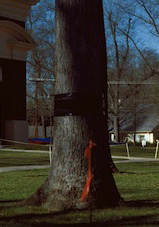 Tree banding seems to be the most effective way to deal with these worms. The sticky bands prevent the moths from crawling up the tree to lay their eggs, but they must be installed in November, because December is moth mating season.
Tree banding seems to be the most effective way to deal with these worms. The sticky bands prevent the moths from crawling up the tree to lay their eggs, but they must be installed in November, because December is moth mating season.
You can use a strip of cotton or insulation and wrap it around the tree, at least three feet from the ground, placed below the lowest limb. I’ve seen a lot of folks use staples to hold the strip in place. (One website recommends positioning a band of roofing felt over the strip and then attaching it with s staple gun.) Of course you don’t want to use staples on small trees, so try using something like electrical tape to hold the strip in place.
The next step is to coat the band with a sticky substance that prevents the moths from inching up the tree, such as Tanglefoot glue. The sticky band should be kept in place until the larvae disappear in April.
We’ll know better next time around!
Strawberry fields forever
Yesterday Shawnna harvested our first strawberries of the year. She waited until I got back from my trip to do this. I don’t think I would have had that kind of self control!
I got the plants last year from our neighbors Dan and Darcey, who had more strawberries than they knew what to do with. They told us that the strawberries were in such abundance that they could smell them when they got out of their car. The strawberries were so plentiful that some were rotting on the vine. They warned me that the plants would spread rapidly and would need to be thinned out. I told them we would love to have that problem!
Now our front yard is full of them, and there is the added bonus of not having to mow that part of the lawn. Life is good!
Solomon’s Seal
I think it’s time for a new series called Nostalgic Plants of Childhood, starting with Solomon’s Seal. As a youngster growing up in Boone, I’d always see this plant when I was hiking in the woods. I loved its gently curving leaves and tiny clusters of white, tubular-shaped flowers. Thinking it was a mountain plant, I was surprised and delighted when some shoots sprouted up in our Durham backyard a few years ago. Since then it’s returned every spring in all its beautiful glory.
A relative of the lily, Solomon’s seal is the name for almost 50 species in the genus Polygonatum. The kind I’m referring to is commonly known as “True Solomon’s Seal” (Polygonatum biflorum) not to be confused with False Solomon’s Seal.
The young shoots are edible and taste like asparagus when boiled. Unfortunately, the rhizomes only seem to grow about an inch or two a year, which means at this point it’s not really practical for us to harvest it. Too bad we don’t have it covering the backyard, like the huge patch we saw on Mt. Jefferson in Ashe County last summer. I’m definitely going to let it keep growing. It seems that our woody, shaded backyard is an ideal environment for it.
Looking online, I was also surpised that there seems to be a whole cottage industry associated with this plant. There is even a website, http://www.solomonsseal.net, that sells Solomon’s Seal for medicinal purposes. For hundreds of years people have used the root to make herbal teas and liniments. The alleged benefits of the root are numerous:
- Heals bruises, wounds and rashes
- Reduces inflammations in joints and tendons
- Reduces blood pressure
- Loosens mucous in lungs
- Prevents premature ejaculation
- Relieves premenstrual syndrome
- Hastens recovery from bone injuries
According to one source, the plant gets its name from King Solomon, who proclaimed that the plant was a gift from God.
It’s just a plant that is too beautiful for us to harvest.
Way down yonder in the paw paw patch…
It made my morning to discover that our paw paw tree had flowered. The flowers are an astonishingly-pretty deep red with a hint of purple. We planted this tree a few years ago, but this is the first time it’s flowered, which means it should fruit sometime over the late summer.
I’ll be honest with you: I’ve never eaten a paw paw before, but I’m told they taste like mangos. They live in shady areas along streams and river basins in much of the Eastern U.S. When we planted this tree, we thought the back of the yard was wet and shady enough, and would be a nice addition to our edible landscape. When I create my first paw paw smoothie, I will be sure to write a post about it.
Does anyone remember this song from their elementary school days?
Pickin’ up paw paws,
Put ‘em in your pocket
Pickin’ up paw paws,
Put ‘em in your pocket
Pickin’ up paw paws,
Put ‘em in your pocket
Way down yonder in the paw paw patch
Bamboo
UPDATE: Dear readers, it turns out that the “bamboo” in my back yard is actually wheat. Shows you what I know. (5/10/13)
Recently some bamboo sprouted up in our yard.
The sight of it made me a little anxious, probably because I’ve heard enough bamboo horror stories over the years to compile an anthology. These are tales that pit neighbor against neighbor; someone’s well-intentioned bamboo screen screen gets out of control and crosses the property line where it becomes a problem for someone else.
There are two kinds of bamboo: running and clumping. The running variety is such a problem because its rhizomes grow laterally, through the soil surface, which make it spread very fast. I’ve heard that if you’re going to plant bamboo, definitely plant the clumping kind. Check out the difference:
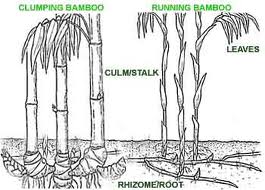
You can control the running kind by creating something called a rhizome barrier. The idea is to dig a trench around the bamboo that is at least two-feet wide, and just two inches shallower than the width. Because the rhizomes will eventually pierce through concrete and steel, a HDPE (High Density Polyethylene) barrier must be placed in the trench. When placing the barrier in the trench, it is essential to angle it in such a way that the rhizomes will move upward as they start to spread. That way, any rhizomes peeking over the barrier can be clipped.
I dug around my neighbor’s fence line and discovered that the bamboo was coming up under the fence from their yard. I’ve been digging a trench along the fence line, and I’m going to get some Polyethylene soon. As far as the rest of the bamboo that has sprouted just a few feet away from the fence line, I think I’m going to create a barrier around it as well so that I will be able to manage it. I realize some of you will think I have just lost my mind. If I create an epidemic, I will take full responsibility for it, and you’ll be reading about it in another post.
I’m willing to take that risk because I truly want our lot to be a closed system, where everything is produced onsite and nothing is thrown away. With that paradigm in mind, why shouldn’t we harvest our own bamboo? We use it extensively for building trellises and staking out plants in the garden. I’ve even constructed a privacy fence out of it before. And besides, Toby Hemeneway gushes over bamboo in Gaia’s Garden, This could be the best thing, or the worst thing we’ve done in the backyard this month. To be continued…
Bat houses
I just purchased a bat house for $2.00 at a neighborhood garage sale. What a bargain!
Why a bat house? For one thing, bats are a natural form of pest control: a single bat can eat up to 1,000 mosquitoes in an hour. I’ve seen them flying around our pond at dusk, so I know they are already here.
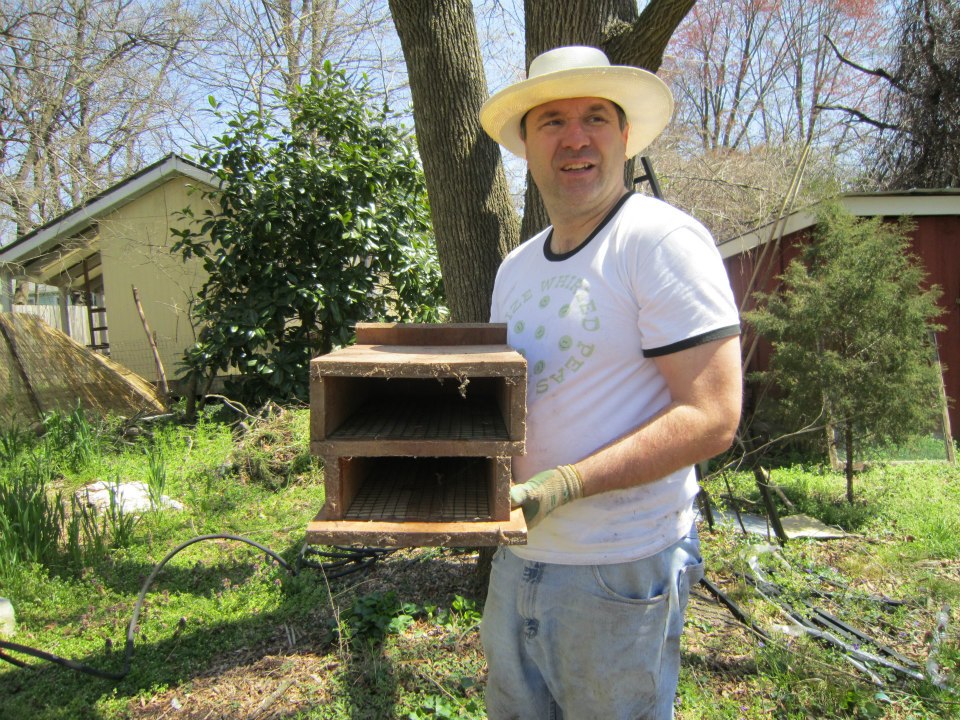 Did you know that over 5 million bats have died from a fungal disease called white-nose syndrome? This disease has decimated bat colonies everywhere, which makes creating a bat habitat that much more important.
Did you know that over 5 million bats have died from a fungal disease called white-nose syndrome? This disease has decimated bat colonies everywhere, which makes creating a bat habitat that much more important.
I’ll be the first to admit that bats freak me out a little bit, and I usually don’t have a problem with wild animals. We had to remove one a couple of years ago that came down our chimney, and I still remember those sharp little teeth, those wings that were really flaps of skin, and its dark onyx color. Creepy.
Bats are rabies carriers of course, but it turns out that a very low percentage of bats carry rabies. They also don’t live very long after they become infected. I’ve never heard of someone contracting it from a bat. In fact, there is a bridge in Austin, Texas that is home to almost a million bats; it is the largest urban bat colony in the U.S. and there has not been a single bat-biting incident.
Now I have to think about how I’m going to hang the bat house. I’ve been looking at some bat-house best practices which happen to be confirmed with statistical data. It turns out that a higher percentage of bats prefer their homes mounted on the sides of buildings or poles rather than a tree. They love being near water and in an area that gets adequate sunlight to warm up their homes. The bat house also needs to be around 20 feet high. I think I’m going to find some very large pieces of bamboo and mount the house on that. Currently I’m trying to find something long and thick enough. Pictures to come soon!
Foraging for onions
Nothing could be finer than foraging for food in your backyard on a glorious North Carolina spring morning. Today’s harvest was wild onions, and there were onions ‘o plenty.
Wild onions are part of the allium genus of plants which includes all types of onions, garlics, chives, and leeks. (Allium is the Latin word for garlic, by the way.) This morning’s mantra was “all alliums are edible,” which happens to be true.
I dug a whole bunch out of the ground, washed them and put them on the chopping block. They looked a lot like scallions to me and definitely had a similar taste. I chopped them up and threw them in the crockpot to give my beef stew some more flavor.
Franklin decided to get a little taste for himself.
I’d be curious to know if anyone out there knows where to find “ramps” which are a variety of wild onion that have become increasingly popular on the restaurant scene. Their stems are flatter and wider then the more conventional kind you see around here, and have a distinct garlic taste. They are also native to the Appalachians. Next time I go up to Boone I think I’ll try to find some.
By the way, Chicago got its name from Checagou, which is the Potawatomi name for wild leeks. Apparently the surrounding marshlands were saturated with rotting, wild leeks. True story.
Bon Appétit!

